How to Know if You Have Pip Installed
Introduction
PIP is a package management arrangement used to install and manage software packages written in Python. Information technology stands for "preferred installer program" or "Pip Installs Packages."
PIP for Python is a utility to manage PyPI package installations from the command line.
If y'all are using an older version of Python on Windows, you may need to install PIP. You can easily install PIP on Windows by downloading the installation bundle, opening the command line, and launching the installer.
This tutorial will testify how to install PIP on Windows, check its version, upgrade, and configure.
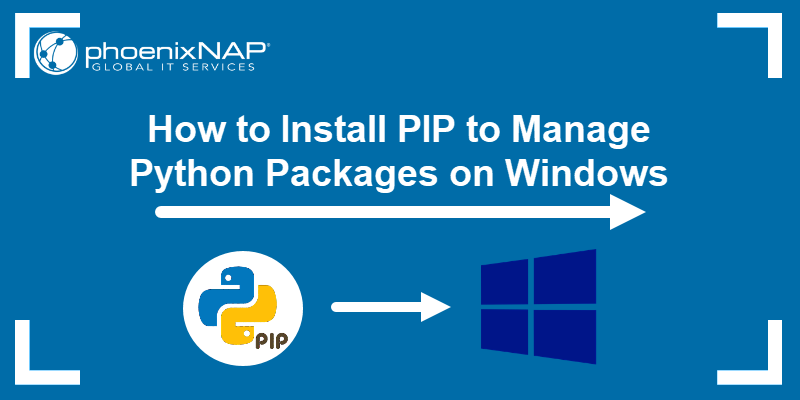
Annotation: The latest versions of Python come with PIP pre-installed, but older versions require manual installation. The following guide is for version 3.four and above. If y'all are using an older version of Python, yous can upgrade Python via the Python website.
Prerequisites
- Computer running Windows or Windows server
- Access to the Control Prompt window
Before y'all offset: Check if PIP is Already Installed
PIP is automatically installed with Python 2.seven.9+ and Python 3.4+ and it comes with the virtualenv and pyvenv virtual environments.
Before you install PIP on Windows, check if PIP is already installed.
1. Launch the command prompt window:
- Press Windows Key + Ten.
- Click Run.
- Type in cmd.exe and hit enter.
Alternatively, type cmd in the Windows search bar and click the "Command Prompt" icon.
2. Type in the following command at the control prompt:
pip help If PIP responds, so PIP is installed. Otherwise, there volition exist an error saying the program could not be found.

Installing PIP On Windows
Follow the steps outlined beneath to install PIP on Windows.
Pace one: Download PIP get-pip.py
Before installing PIP, download the go-pip.py file.
1. Launch a command prompt if information technology isn't already open up. To practise and so, open the Windows search bar, blazon cmd and click on the icon.
two. Then, run the post-obit command to download the become-pip.py file:
curl https://bootstrap.pypa.io/go-pip.py -o go-pip.py 
Pace 2: Installing PIP on Windows
To install PIP type in the following:
python go-pip.py 
If the file isn't institute, double-check the path to the folder where you saved the file. Yous tin can view the contents of your current directory using the following control:
dir The dir control returns a total listing of the contents of a directory.
Stride 3: Verify Installation
Once yous've installed PIP, you tin test whether the installation has been successful past typing the following:
pip aid If PIP has been installed, the programme runs, and you should see the location of the software package and a listing of commands you tin use with pip .
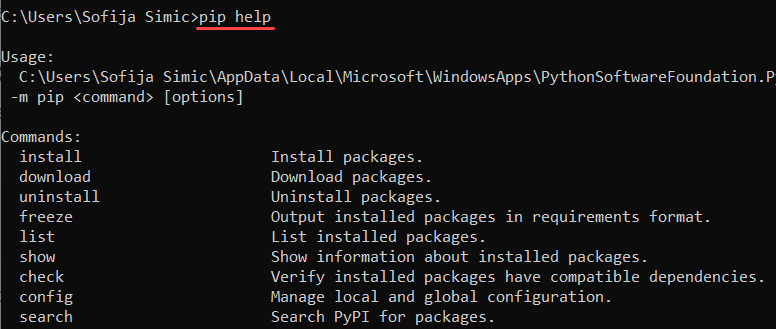
If you receive an error, echo the installation process.
Step four: Add Pip to Windows Environment Variables
To run PIP from any location, yous demand to add together it to Windows environment variables to avert getting the "non on PATH" mistake. To do so, follow the steps outlined beneath:
- Open the Arrangement and Security window by searching for it in the Control Aeroplane.
- Navigate to System settings.
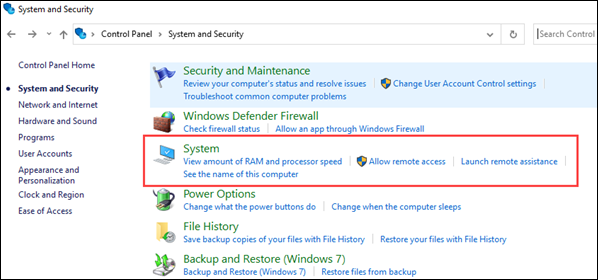
- And so, select Advanced organization settings.
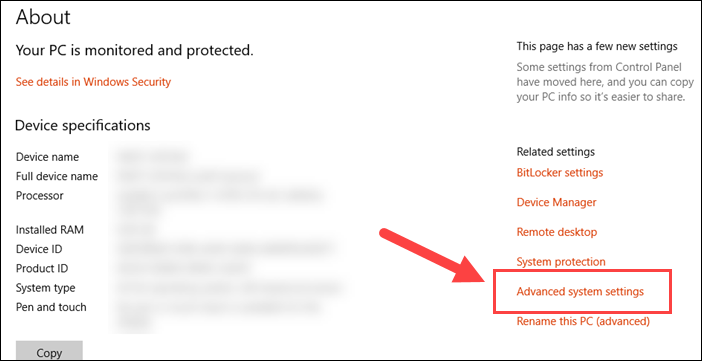
- Open up the Environment Variables and double-click on the Path variable in the Arrangement Variables.
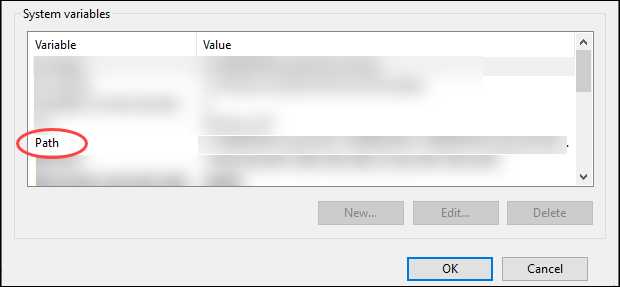
- Next, select New and add the directory where you lot installed PIP.
- Click OK to save the changes.
Step 5: Configuration
In Windows, the PIP configuration file is %HOME%\pip\pip.ini.
In that location is also a legacy per-user configuration file. The file is located at %APPDATA%\pip\pip.ini .
You lot can set a custom path location for this config file using the environs variable PIP_CONFIG_FILE .
Upgrading PIP for Python on Windows
New versions of PIP are released occasionally. These versions may improve the functionality or be obligatory for security purposes.
To cheque the current version of PIP, run:
pip --version 
To upgrade PIP on Windows, enter the post-obit in the control prompt:
python -m pip install --upgrade pip This command uninstalls the one-time version of PIP and and then installs the well-nigh current version of PIP.
Downgrade PIP Version
Downgrading may be necessary if a new version of PIP starts performing undesirably. To downgrade PIP to a prior version, specifying the version you lot desire.
To downgrade PIP, utilise the syntax:
python -m pip install pip==version_number For example, to downgrade to version eighteen.ane, you would run:
python -k pip install pip==18.1 You should now see the version of PIP that you specified.
Determination
Congratulations, you accept installed PIP for Python on Windows. Check out our other guides to larn how to install PIP on other operating systems:
- Install PIP on CentOS
- Install PIP on Ubuntu
- Install PIP on Debian
- Install PIP on Mac
Now that you have PIP up and running, you are prepare to manage your Python packages.
NumPy is a library for the Python programming language, calculation support for large, multi-dimensional arrays and matrices. Cheque out our guide and learn how to install NumPy using PIP.
Was this article helpful?
Aye No
Source: https://phoenixnap.com/kb/install-pip-windows
0 Response to "How to Know if You Have Pip Installed"
Enregistrer un commentaire